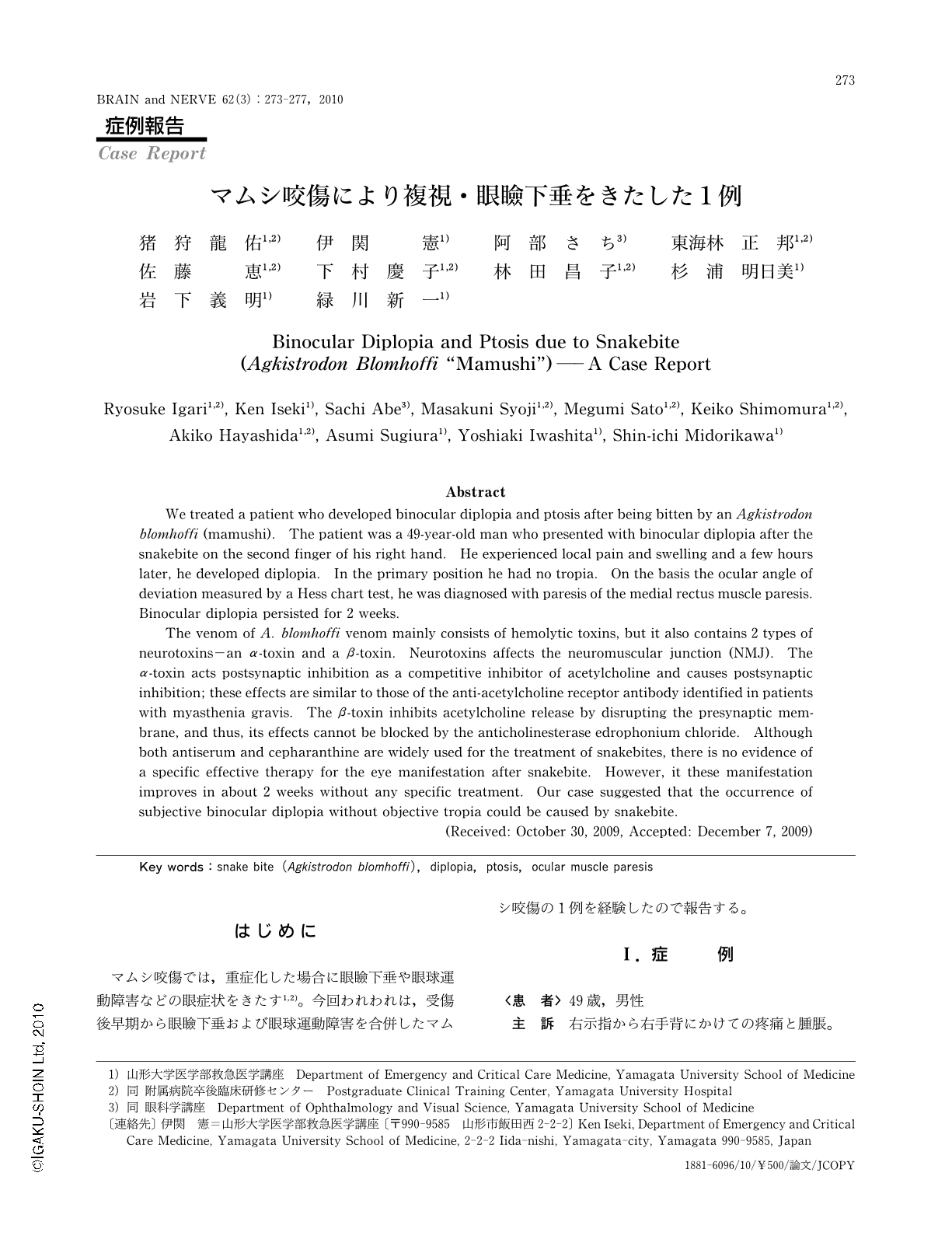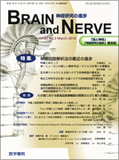Japanese
English
- 有料閲覧
- Abstract 文献概要
- 1ページ目 Look Inside
- 参考文献 Reference
はじめに
マムシ咬傷では,重症化した場合に眼瞼下垂や眼球運動障害などの眼症状をきたす1,2)。今回われわれは,受傷後早期から眼瞼下垂および眼球運動障害を合併したマムシ咬傷の1例を経験したので報告する。
Abstract
We treated a patient who developed binocular diplopia and ptosis after being bitten by an Agkistrodon blomhoffi (mamushi). The patient was a 49-year-old man who presented with binocular diplopia after the snakebite on the second finger of his right hand. He experienced local pain and swelling and a few hours later, he developed diplopia. In the primary position he had no tropia. On the basis the ocular angle of deviation measured by a Hess chart test, he was diagnosed with paresis of the medial rectus muscle paresis. Binocular diplopia persisted for 2 weeks.
The venom of A. blomhoffi venom mainly consists of hemolytic toxins, but it also contains 2 types of neurotoxins-an α-toxin and a β-toxin. Neurotoxins affects the neuromuscular junction (NMJ). The α-toxin acts postsynaptic inhibition as a competitive inhibitor of acetylcholine and causes postsynaptic inhibition; these effects are similar to those of the anti-acetylcholine receptor antibody identified in patients with myasthenia gravis. The β-toxin inhibits acetylcholine release by disrupting the presynaptic membrane, and thus, its effects cannot be blocked by the anticholinesterase edrophonium chloride. Although both antiserum and cepharanthine are widely used for the treatment of snakebites, there is no evidence of a specific effective therapy for the eye manifestation after snakebite. However, it these manifestation improves in about 2 weeks without any specific treatment. Our case suggested that the occurrence of subjective binocular diplopia without objective tropia could be caused by snakebite.
(Received: October 30,2009,Accepted: December 7,2009)

Copyright © 2010, Igaku-Shoin Ltd. All rights reserved.


